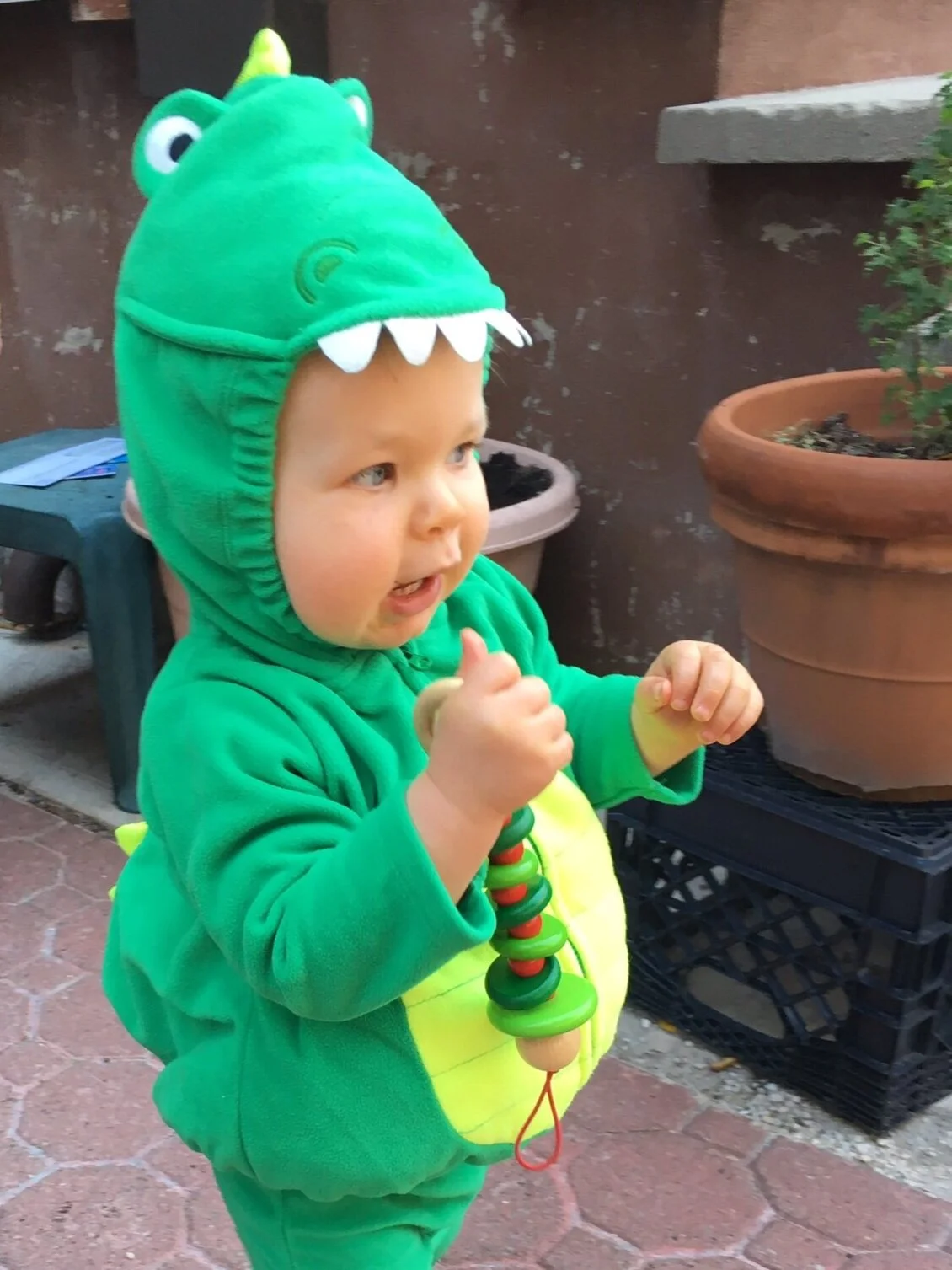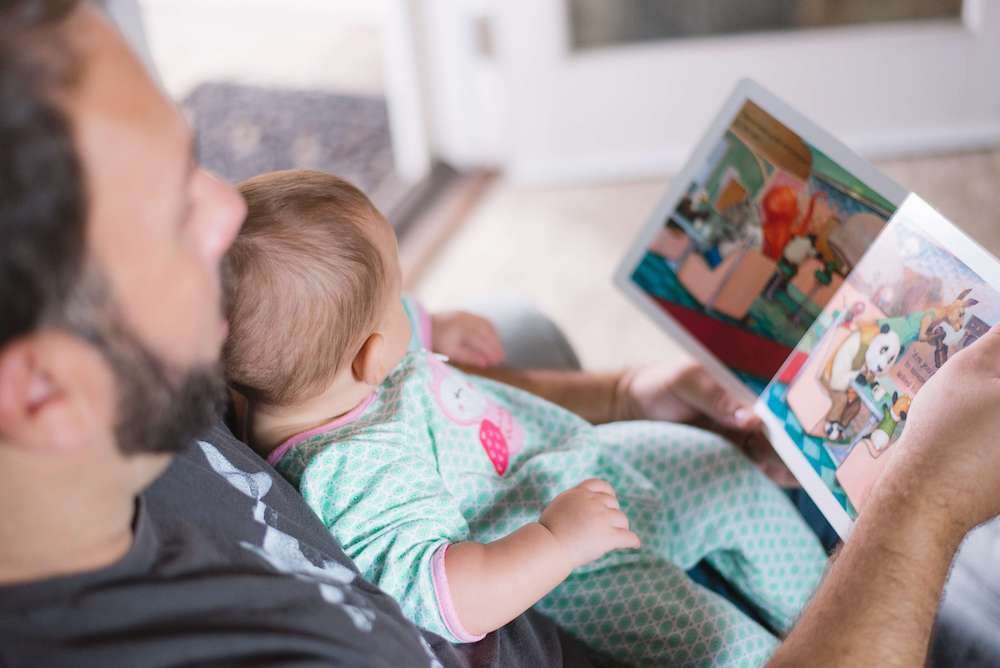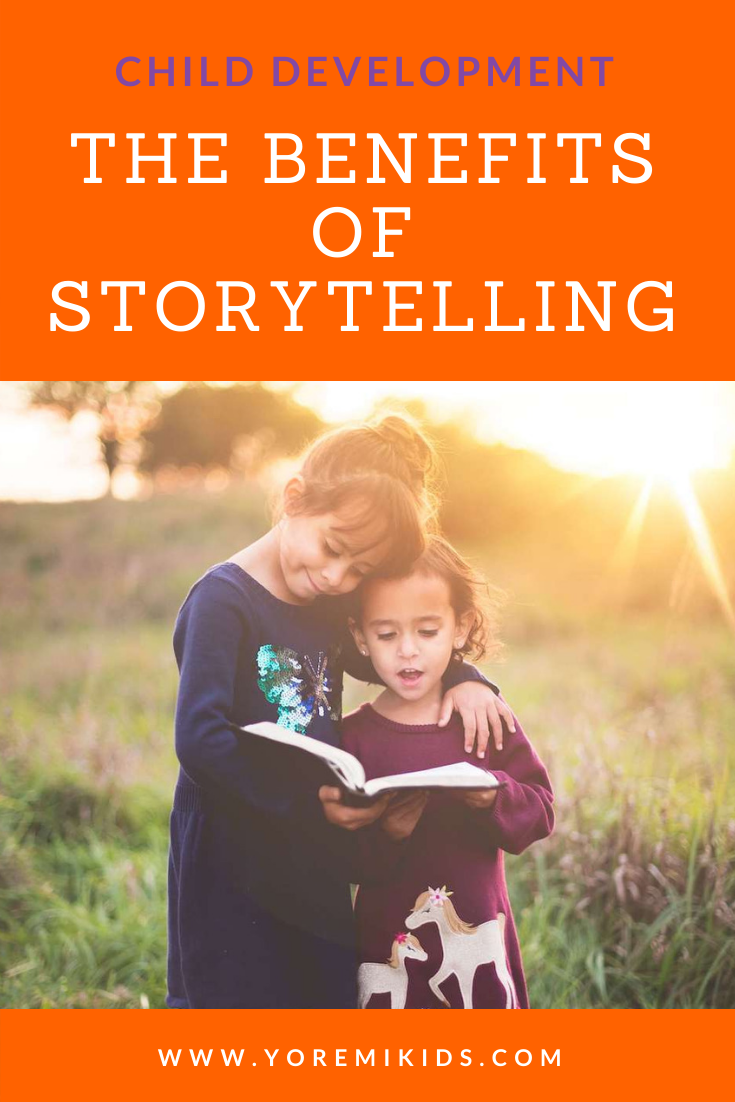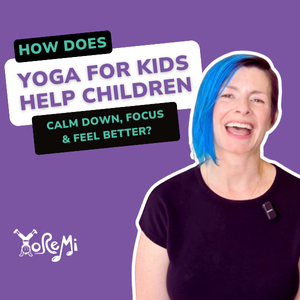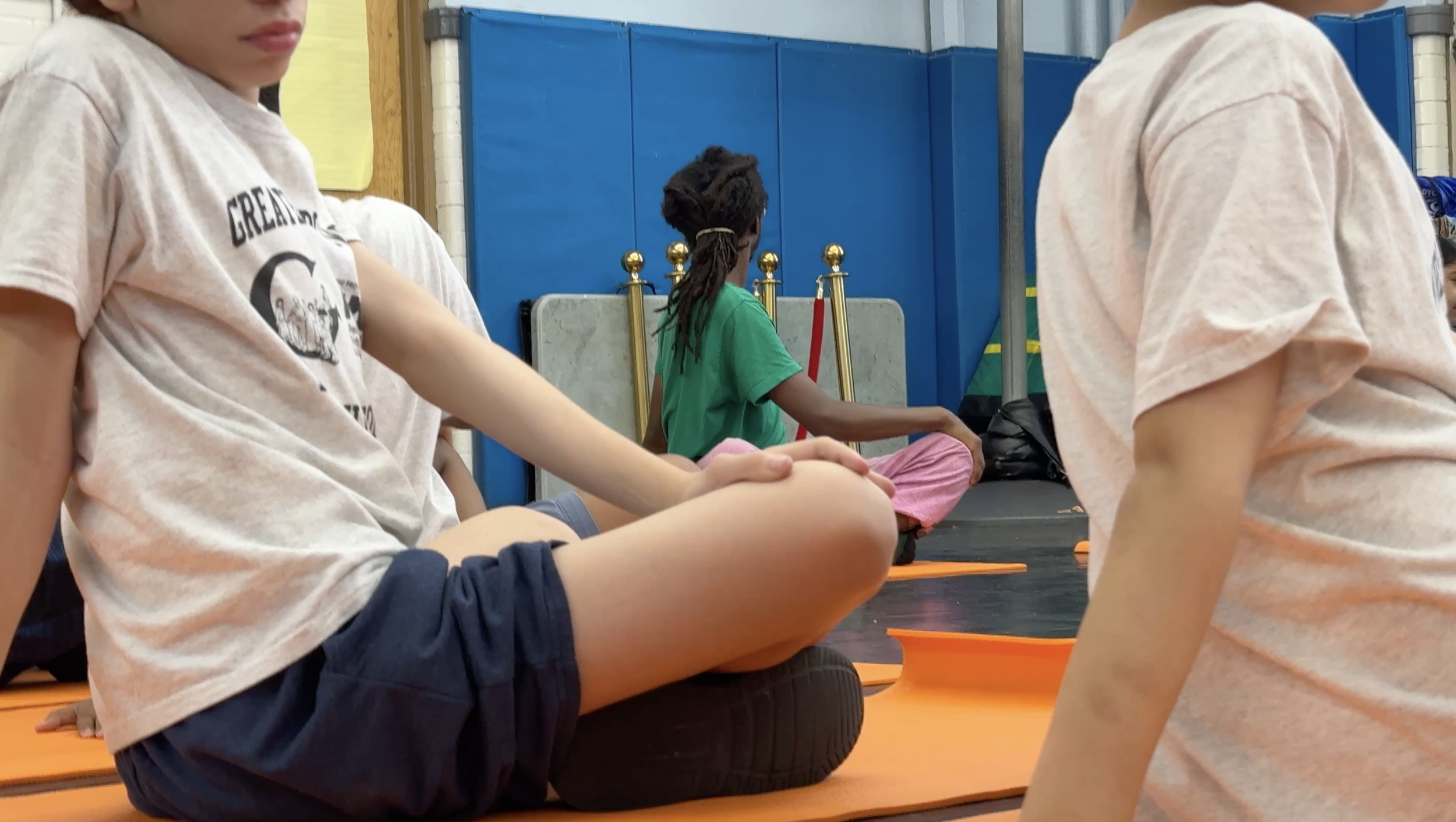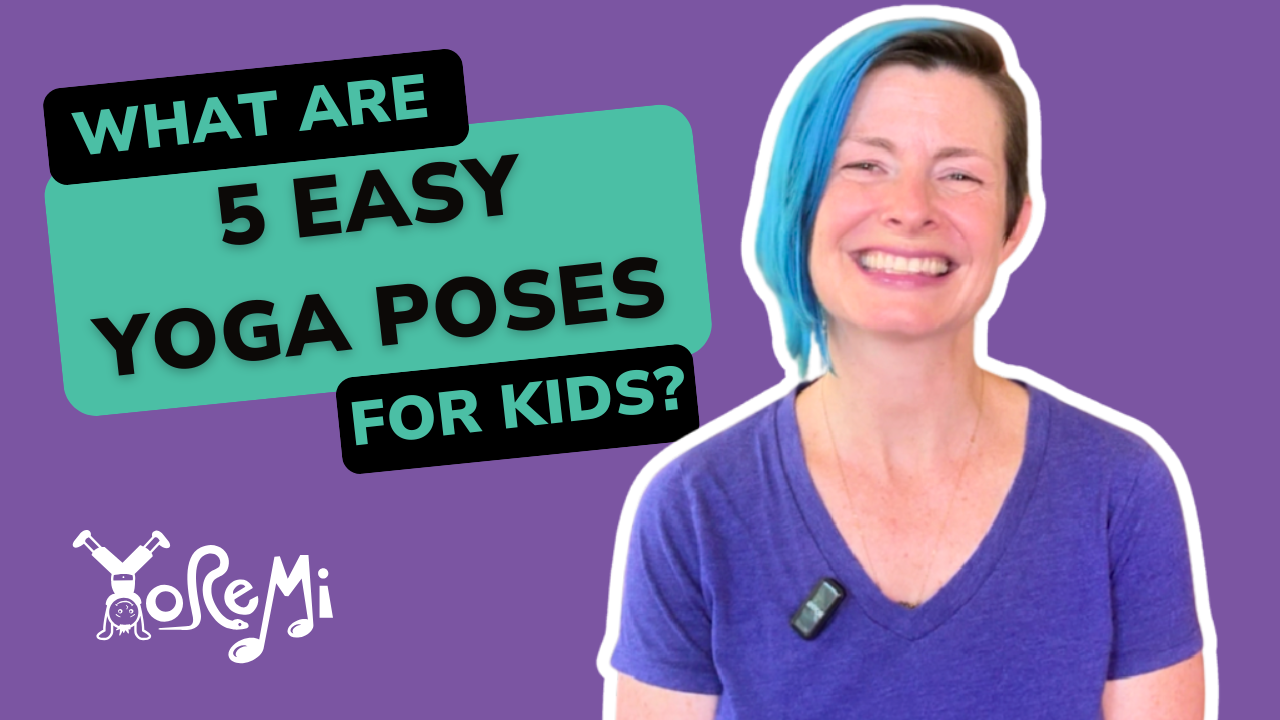The Benefits of Storytelling: Help Kids Develop Social Emotional Learning
My five year old loves to tell stories, often commanding my attention with “Mommy, listen to THIS story” or a dramatic “I have something to tell you” followed by a description of what happened at recess that day or the events at his birthday party 3 months ago (in his mind, last week).
Sometimes he narrates a story he couldn’t possibly remember but has gleaned from family folklore: like the tale of his birth or his first Halloween, when he thought the shiny wrapped candies were stacking blocks.
“And can you believe it? I didn’t eat a single piece of candy!”
His play centers around stories he makes up…throwing on a mask and cape to enact a superhero rescue or narrating full scenes with characters he has added to his latest magnatile structure.
His little brother, almost 2, now mimics his big brothers antics, making sound effects as he flies a toy around the room or waves a magic wand.
Little brother has also started playing with the seeds of storytelling by narrating his experiences. He repeatedly (and slightly incoherently) itemizes all the items on his breakfast plate every time someone new enters the room, for instance.
Stories are Powerful and Shape Our Communities
Our human ability to organize our experiences into narratives differentiate us from all other living species on our planet. Through stories we create shared imagined myths which guide and shape our societies, cultures and communities.
“Large numbers of strangers can cooperate successfully by believing in common myths. Any large-scale human cooperation – whether a modern state, a medieval church, an ancient city or an archaic tribe – is rooted in common myths that exist only in people’s collective imagination.”
I recently had the privilege to attend the 2019 Little Chairs, Big Differences conference at Weeksville Heritage Center.
The day of learning centered around story and voice for children in early education settings and included a range of presentations that included historical story-telling, diversity and inclusion as well as incorporating music, movement and yoga.
Making space for children to tell their stories and to hear the stories of others is important as they learn to be part of our culture and society.
The wonderful workshops I attended reminded me why a commitment to imagination and storytelling is so important in early education and beyond.
“To be a person is to have a story to tell.”
By telling our unique stories, we help create belonging, empathy and social emotional learning.
Through sharing stories we can uncover our own truths as well as discover and relate to those around us. Storytelling builds empathy, enabling us to put ourselves in someone else’s shoes, creating the foundation of social emotional intelligence that is so important in early education.
Here are some of our favorite storytelling benefits, and ways to celebrate and affirm uniqueness through storytelling with young learners.
Storytelling Creates Connection and a Sense of Belonging
Throughout history, humans have told stories to make sense of the world around us, to create purpose and meaning, and to establish understanding with others. Everyone, no matter what age, is hard-wired for connection and that valuable sense of belonging is established through the stories we tell ourselves and those we share with our community.
In a survey by Education Week, 80% of teachers said they thought a sense of belonging in the classroom is important for student success, while 41% said it is challenging or very challenging to make their students feel like they belong, particularly when it comes to concerns students express around sexual orientation, gender, race, socioeconomic, ethnic, and disability identities.
How often do we take the time to listen to and understand the unique perspective of others, especially children?
As early education becomes more geared toward academic performance, it becomes too focused on top-down, teacher-directed instruction. In that environment we may overlook the tremendous learning that sharing stories can create.
We have to create space and encourage children to take the lead if they are going to learn the value of their own stories and also to appreciate the unique stories of others.
“Many stories matter. Stories have been used to dispossess and to malign. But stories can also be used to empower and to humanize. Stories can break the dignity of people. But stories can also repair the broken dignity.”
Story-Time Promotes Inclusivity
We know that reading together promotes literacy and parents and teachers are always looking for creative ways to incorporate books into the classroom. But while our world and schools are often incredibly diverse, many children grow up not seeing themselves represented in the books they read.
Think about how you might design your classroom library to have both mirrors and windows: mirrors to see ourselves reflected in the world, so we don’t feel alone, and windows to see outside of our own lives, to recognize the humanity of other people.
Storytelling helps us highlight our unique stories, and create stories that are inclusive and intersectional. These stories focus on affirming all children’s identities, stories, and voices in our educational spaces.
Family Stories Help Create Empathy
Children love to talk about their families and are often quick to share anecdotes about their family members throughout lessons, no matter how tangentially related they may be. This natural desire can be turned into a fun class project to open up a discussion of diversity while creating empathy.
Invite students to create a story about their family, illustrating or writing out the narrative (or a combination of both).
Encourage community engagement by inviting family members to help with the children’s stories or to write their own. Include these stories that children and families have created during class story-times. Have children partner up and share their stories with each other.
Learning Stories Build Extrinsic Motivation
In Yo Re Mi classes we use fact-based observations in place of praise language. We avoid saying things like "Good Job" or "You're So (fill in the blank - smart, creative, messy, etc)." Instead, we observe. "You are balancing like a tall, strong tree!" or "I notice that you are being very still and quiet in relaxation today."
These observations provide a mirror for children to see what you are observing. It also allows them to separate their self-worth from their behavior or what they are producing. This builds intrinsic rather than extrinsic motivation and the desire to do their best work for themselves, regardless of who is watching.
When combined with logical consequences, this style of communication allows the student and teacher to create an ongoing dialogue about their learning. When we string all of these observations together into a narrative, we create a learning story.
While learning stories are created by a teacher, we can also share them with our students and invite their collaboration. To expand on the example above, I might say to Michael…
“Michael, you are balancing like a tall, strong tree. I noticed when we began, your body was a little wobbly and you almost fell over. I saw you thinking hard about how you might make your body into a tree. It was really fun to watch you figure it out. First, you started moving more slowly and carefully. Then, you decided to keep your foot a little lower on your standing leg. Plus, when a friend next to you fell over, you did not let that distract you and you kept on going! Sometimes when things are difficult, it takes all of our concentration to accomplish them - you did that!”
I can ask Michael for his comments and feedback to include his perspective in the learning story. Then, if Michael agrees, we could even share the story to the entire group of children which may spark ideas for them.
Utilizing a learning story can also provide direction for the teacher. For example, after this story, I might introduce a focus spot the next time we practice tree pose to encourage the children to work on single-pointed concentration.
Movement Stories Foster Imagination
In educational settings, we often share stories utilizing written words and illustrations. But oral tradition is still the most wide-spread form of human communication. By incorporating creative movement and vocalization to create a journey, children are able to live inside oral narratives in a new way.
In every Yo Re Mi class, children collaborate with the teacher to create an adventure.
Movement, music and dramatic play are powerful and accessible ways for young children to share their stories, even before they are adept at written or spoken language.
Try this: Animal Stories
Invite children to choose an animal they want to be.
Ask them to share (through their body) how their animal moves, sounds and feels
Create a story about what that animal is doing and why utilizing creative movement
Story Songs Support Child Development
Sometimes the best way to remember a story is to sing it. Children are naturally drawn to melody and music and story songs help early learners discover story structure, patterning and sequencing while having fun and being creative.
There are so many story songs which parents and teachers already share with children.
Kids learn about determination and fortitude from the “Itsy Bitsy Spider.”
We celebrate silliness and laugh together as we sing “There Was and Old Lady Who Swallowed a Fly.”
Folk traditions across the world are full of story songs for children.
Think about the ways we can invite children to make these songs their own. Encourage them to add movements and sounds, write their own verses, or invent completely original versions.
Here’s an example of our yoga take on classic folk tune, “Bought Me A Cat”:
We all have so many unique and incredible stories to tell. Don’t forget to share your own stories with your students too! The more we listen to each other’s stories, the more connected our community, our city and our world become.
And they lived happily ever after. The End.
Save this post:

